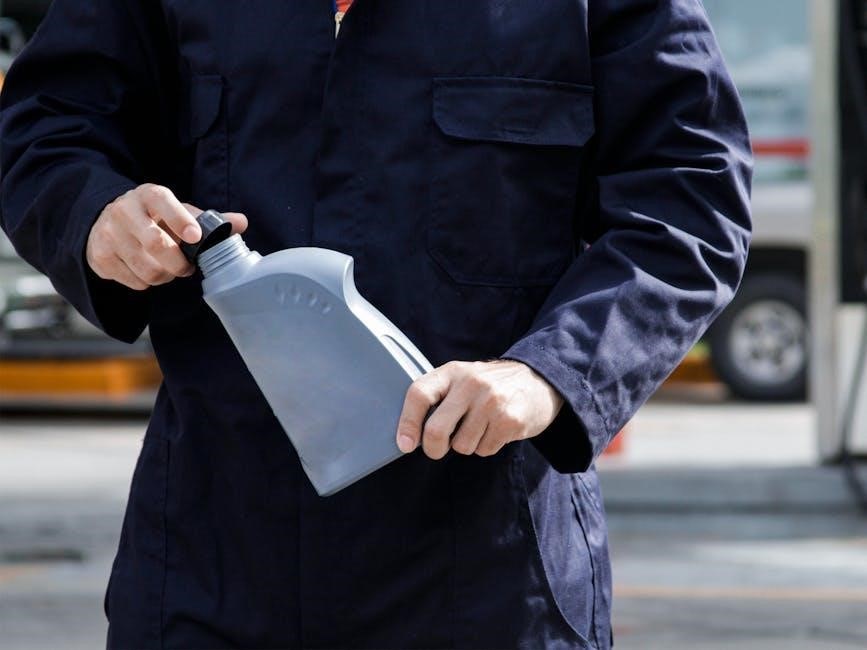The Anxiety Iceberg: A Comprehensive Exploration
The anxiety iceberg visually represents how much of anxiety remains hidden‚ mirroring an iceberg where only a small portion is visible above the surface․
This pdf resource aids children and teens in recognizing deeper emotions fueling their worries‚ offering a powerful tool for self-discovery and understanding․
Exploring the model reveals that visible symptoms are just the ‘tip’‚ while underlying factors like trauma‚ stress‚ and unmet needs form the larger‚ submerged base․
Understanding this metaphor is crucial for compassionate self-awareness and effective therapeutic interventions‚ as highlighted in various counseling resources available online․
The Anxiety Iceberg Model is a compelling visual metaphor gaining traction in therapeutic settings and self-help resources‚ often presented as a downloadable pdf․ It elegantly illustrates that outwardly displayed anxiety symptoms – the visible “tip” – represent only a fraction of the total experience․
This model‚ popularized by counseling centers like Compassionate Counseling St․ Louis and Everbloom Counseling‚ LLC‚ encourages a deeper exploration beyond surface-level manifestations․ It prompts individuals to consider the vast‚ hidden portion beneath the surface‚ encompassing underlying emotions‚ past traumas‚ and deeply rooted beliefs․
The pdf format frequently includes diagrams and prompts designed to facilitate self-reflection‚ particularly for children and teens‚ as offered by AnxietyHelpBox․com․ It’s a tool to understand that anxiety isn’t simply a feeling‚ but a complex interplay of conscious and unconscious factors․
Ultimately‚ the model aims to foster self-compassion and a more holistic approach to managing anxiety․
The Metaphor Explained: Visible vs․ Hidden Anxiety
The anxiety iceberg‚ often detailed in accessible pdf guides‚ powerfully contrasts visible and hidden aspects of anxiety․ The portion above the waterline – observable behaviors like fidgeting‚ avoidance‚ or irritability – are merely symptoms‚ not the root cause․
Beneath the surface lies a significantly larger mass representing underlying emotions such as fear‚ sadness‚ or shame‚ alongside contributing factors like past trauma‚ stress‚ and unmet needs․ Resources from Everbloom Counseling emphasize this distinction․
These hidden elements‚ often unconscious‚ exert a substantial influence on anxious responses‚ mirroring Freud’s iceberg model of the psyche․ A pdf worksheet from AnxietyHelpBox․com helps individuals identify these submerged feelings․
Understanding this disparity is crucial; addressing only visible symptoms provides temporary relief‚ while exploring the hidden depths fosters lasting change․

Understanding the Visible Tip of the Iceberg
Anxiety iceberg pdf resources highlight that observable symptoms – like worry or restlessness – represent only a small fraction of the total anxiety experience․
These visible signs signal deeper‚ underlying emotional and psychological processes requiring further exploration for effective support and lasting relief․
Commonly Observed Anxiety Symptoms
Anxiety iceberg pdf materials frequently detail a range of outwardly visible symptoms‚ representing the ‘tip’ of the emotional challenge․ These commonly include excessive worry‚ often disproportionate to the situation‚ and persistent feelings of nervousness or unease․
Individuals may experience restlessness‚ difficulty concentrating‚ or a sense of being on edge; Irritability and muscle tension are also frequently reported․ Furthermore‚ observable behavioral changes‚ such as avoidance of certain situations or social withdrawal‚ can indicate underlying anxiety․
These symptoms‚ while distressing‚ are often the most readily recognized indicators‚ prompting individuals to seek understanding and support through resources like the anxiety iceberg model and associated pdf guides․
Recognizing these signs is the first step towards exploring the deeper‚ hidden components of the anxiety experience․
Physical Manifestations of Anxiety
Anxiety iceberg pdf resources emphasize that anxiety isn’t solely a mental experience; it profoundly impacts the body․ Common physical symptoms often accompany emotional distress‚ forming a significant part of the visible ‘tip’ of the iceberg․
These can include a racing heart‚ shortness of breath‚ and sweating‚ even without physical exertion․ Digestive issues‚ such as stomach aches‚ nausea‚ or diarrhea‚ are also frequently reported․ Muscle tension‚ headaches‚ and fatigue contribute to the physical burden of anxiety․
Understanding these physical responses‚ as detailed in pdf guides‚ is crucial for recognizing anxiety and differentiating it from other medical conditions․ Addressing these physical symptoms can provide immediate relief․
Acknowledging the body’s response is a key component of holistic anxiety management․
Behavioral Expressions of Anxiety
Anxiety iceberg pdf materials highlight how anxiety manifests in observable behaviors‚ forming another part of the visible ‘tip’․ These expressions often serve as coping mechanisms‚ though they can be unhelpful in the long run․
Common behavioral responses include avoidance of situations that trigger anxiety‚ excessive reassurance-seeking‚ and difficulty concentrating․ Individuals might exhibit restlessness‚ fidgeting‚ or pacing․ Procrastination and perfectionism are also frequently observed․
Pdf resources for children and teens specifically address behaviors like clinginess‚ irritability‚ or withdrawal․ Recognizing these patterns‚ as outlined in these guides‚ is vital for early intervention․
Understanding these behavioral expressions allows for more compassionate and effective support․

Delving Beneath the Surface: The Larger Portion
Anxiety iceberg pdf resources reveal the vast hidden realm of underlying emotions‚ past experiences‚ and core beliefs fueling visible anxiety symptoms․
This submerged section represents the bulk of the issue‚ demanding deeper exploration for lasting relief and genuine understanding․
Trauma‚ stress‚ and unmet needs significantly contribute to this hidden foundation‚ as detailed in counseling materials․
Underlying Emotions Fueling Anxiety
The anxiety iceberg pdf emphasizes that visible anxiety is often a surface manifestation of deeper‚ unacknowledged emotions․ These hidden feelings form the substantial base of the iceberg‚ driving anxious thoughts and behaviors․
Frequently‚ anxiety masks underlying sadness‚ grief‚ shame‚ or even anger․ Individuals may experience anxiety as a more socially acceptable expression of these difficult emotions‚ unconsciously shielding themselves from confronting the root cause․
Resources highlight that exploring these underlying emotions is crucial for effective intervention․ Identifying and processing feelings like sadness or anger can significantly reduce anxiety’s intensity and frequency․
Understanding this connection allows for a shift from managing symptoms to addressing the core emotional needs driving the anxiety‚ fostering genuine healing and lasting well-being․
Compassionate self-exploration‚ often facilitated through therapeutic approaches‚ is key to uncovering these hidden emotional drivers․
Fear and its Role in the Anxiety Iceberg
The anxiety iceberg pdf illustrates how fear‚ often deeply rooted‚ constitutes a significant portion of the submerged base․ It’s rarely the presenting issue‚ but a core driver of anxious experiences․
This fear can stem from past traumas‚ perceived threats‚ or learned associations․ The iceberg model helps visualize how seemingly disproportionate reactions are often linked to these underlying fears․
Resources emphasize that anxiety isn’t simply a response to current circumstances; it’s frequently a reactivation of past fears‚ triggering a cascade of physiological and emotional responses․
Addressing these underlying fears requires careful exploration‚ often within a therapeutic context‚ to challenge distorted beliefs and develop coping mechanisms․
Recognizing fear’s central role is vital for moving beyond symptom management towards genuine emotional resolution and lasting anxiety reduction․
Stress as a Contributing Factor
The anxiety iceberg pdf demonstrates how chronic stress significantly expands the hidden portion of the iceberg‚ exacerbating underlying vulnerabilities․ It’s rarely an isolated cause‚ but a potent amplifier of anxious feelings․
Ongoing stressors‚ whether work-related‚ relational‚ or societal‚ deplete coping resources and lower the threshold for anxiety activation․ This creates a cycle where stress fuels anxiety‚ and anxiety intensifies the perception of stress․
Resources highlight that the iceberg model helps individuals recognize how seemingly manageable stress can trigger deeper‚ unresolved emotional issues residing beneath the surface․
Effective stress management techniques‚ alongside addressing core anxieties‚ are crucial for reducing the overall size of the iceberg and promoting emotional wellbeing․
Understanding this interplay is key to developing sustainable coping strategies and preventing chronic anxiety․
Past Experiences and Trauma
The anxiety iceberg pdf powerfully illustrates how past experiences‚ particularly trauma‚ form a substantial‚ often unseen‚ base of the iceberg․ These experiences aren’t simply memories; they actively shape present-day anxiety responses․
Trauma‚ including adverse childhood events‚ can create deeply ingrained patterns of fear and hypervigilance‚ residing in the unconscious as Freud’s theory suggests․
Resources emphasize that unresolved grief‚ loss‚ or witnessing difficult events contribute significantly to the submerged portion‚ fueling current anxiety levels․
Recognizing these historical roots is vital for healing‚ as addressing the underlying trauma can reduce the overall intensity and frequency of anxious symptoms․
Therapeutic approaches help individuals process these experiences and rewrite the narrative‚ lessening the iceberg’s weight․
Childhood Experiences and Attachment Styles
The anxiety iceberg pdf highlights the profound impact of early childhood experiences on developing anxiety‚ particularly through attachment styles․ Secure attachment‚ fostered by consistent and responsive caregiving‚ builds resilience․
However‚ inconsistent or unavailable caregivers can lead to insecure attachment – anxious-preoccupied‚ dismissive-avoidant‚ or fearful-avoidant – significantly contributing to the iceberg’s base․
These early relational patterns shape core beliefs about self-worth and trustworthiness‚ influencing how individuals navigate relationships and manage stress throughout life․
The ‘hidden’ portion of the iceberg often contains unresolved emotional needs from childhood‚ manifesting as anxiety in adulthood․
Understanding attachment history is crucial for therapeutic work‚ fostering self-compassion and healthier relational patterns․

The Unconscious Level: Deeply Rooted Causes
The anxiety iceberg pdf reveals that repressed conflicts and unmet needs‚ residing in the unconscious‚ powerfully influence anxious manifestations‚ as Freud theorized․
These deeply rooted causes‚ hidden beneath awareness‚ significantly contribute to the larger‚ submerged portion of the anxiety iceberg․
Exploring this level unlocks understanding of core beliefs and early life events shaping present-day emotional experiences․
Freud’s Influence on the Iceberg Model
Sigmund Freud’s psychoanalytic theory profoundly shaped the anxiety iceberg model‚ particularly its emphasis on the unconscious mind․ The pdf resources utilizing this metaphor directly reflect Freud’s belief that a substantial portion of our psychological life operates outside of conscious awareness․
He posited that repressed conflicts‚ unresolved desires‚ and traumatic experiences are relegated to the unconscious‚ yet continue to exert a powerful influence on our thoughts‚ feelings‚ and behaviors․
The iceberg visually represents this concept; the vast‚ hidden mass beneath the surface symbolizes the unconscious‚ while the visible tip represents conscious awareness․
Anxiety‚ according to this perspective‚ often arises from these unconscious dynamics‚ manifesting as symptoms when underlying conflicts attempt to surface․ Understanding Freud’s influence is key to interpreting the deeper layers of the anxiety iceberg․
Repressed Conflicts and Anxious Manifestations
The anxiety iceberg pdf illustrates how repressed conflicts‚ deeply rooted in the unconscious‚ contribute significantly to anxious presentations․ These conflicts‚ often stemming from past trauma or unmet needs‚ are pushed out of conscious awareness as a defense mechanism․
However‚ they don’t simply disappear; instead‚ they seek expression through various anxious symptoms‚ forming the hidden base of the iceberg․
These manifestations can range from generalized worry and panic attacks to phobias and obsessive-compulsive behaviors․
Recognizing this connection—between the unseen internal struggles and outward anxiety—is crucial for effective therapeutic intervention‚ allowing individuals to address the root causes rather than solely managing the symptoms․
Unmet Needs and Core Beliefs
The anxiety iceberg pdf highlights how deeply ingrained unmet needs and negative core beliefs form a substantial portion of the hidden base fueling anxiety․ These fundamental psychological requirements—for safety‚ connection‚ autonomy‚ and self-worth—when consistently denied in early life‚ can create lasting vulnerabilities․
Consequently‚ individuals develop core beliefs about themselves‚ others‚ and the world that are often pessimistic and self-limiting․
These beliefs‚ operating largely outside of conscious awareness‚ shape perceptions and reactions‚ contributing to anxious thoughts and behaviors․
Addressing these underlying needs and challenging maladaptive core beliefs is essential for lasting relief‚ moving beyond symptom management towards genuine healing and emotional well-being․
The Impact of Early Life Events
The anxiety iceberg pdf emphasizes that early life experiences profoundly shape the submerged portion of anxiety‚ often laying the groundwork for future struggles․
Experiences like trauma‚ grief‚ loss‚ or growing up with parents exhibiting anger management issues can create deep emotional wounds that remain largely unconscious․
These formative events influence attachment styles and core beliefs‚ impacting how individuals perceive and interact with the world․
Understanding this connection—that we are products of our upbringing and environment—is crucial for compassionate self-exploration and effective therapeutic intervention‚ fostering healing and resilience․

Applying the Anxiety Iceberg to Different Age Groups
The anxiety iceberg pdf adapts to various ages‚ helping children identify hidden emotions‚ while aiding teens and adults in recognizing recurring patterns․
This visual tool promotes age-appropriate self-awareness and emotional understanding across the lifespan‚ fostering effective coping strategies․
Anxiety in Children and Teens
The anxiety iceberg pdf is particularly valuable when working with children and teens‚ offering a visually accessible way to explore complex emotions often difficult to articulate․
For younger individuals‚ the iceberg helps differentiate between surface-level worries and the underlying feelings – like sadness‚ fear‚ or frustration – that fuel anxious behaviors․
This resource empowers them to recognize that anxiety isn’t simply a feeling‚ but a symptom with deeper roots‚ promoting self-compassion and reducing self-blame․
With adolescents‚ the iceberg model facilitates discussions about past experiences‚ attachment styles‚ and societal pressures contributing to their anxiety․
It encourages exploration of unmet needs and core beliefs‚ fostering a greater understanding of their emotional landscape and promoting healthier coping mechanisms․
Ultimately‚ the pdf serves as a springboard for open communication and collaborative problem-solving․
Using the Iceberg Model with Adolescents
The anxiety iceberg pdf proves exceptionally useful with adolescents‚ who often grapple with complex internal experiences they struggle to verbalize․
Presenting the model encourages self-reflection‚ prompting them to identify not just what they’re feeling‚ but why – exploring the submerged layers of their emotional state․
Facilitated discussions can center around past traumas‚ grief‚ or challenging family dynamics‚ acknowledging how these experiences contribute to present-day anxiety․
The visual nature of the iceberg normalizes the idea that significant emotional weight often lies beneath the surface‚ reducing feelings of isolation and shame․
It also allows for exploration of societal pressures and cultural influences‚ helping teens contextualize their anxieties within a broader framework․
This pdf resource fosters a collaborative approach to understanding and managing anxiety‚ empowering adolescents to take ownership of their well-being․
Anxiety in Adults: Recognizing Patterns
Utilizing an anxiety iceberg pdf with adults facilitates a deeper understanding of long-standing anxiety patterns‚ often rooted in early life experiences․
Adults can benefit from visually mapping their anxieties‚ identifying recurring themes linked to childhood attachments‚ past traumas‚ or unresolved conflicts․
The model encourages introspection‚ prompting examination of core beliefs and unmet needs that contribute to chronic worry and emotional distress․
Recognizing the ‘hidden’ portion of the iceberg – the underlying emotions like fear‚ sadness‚ and stress – is crucial for effective coping strategies․
This pdf resource aids in breaking down shame and stigma surrounding anxiety‚ fostering self-compassion and a willingness to seek support․
Ultimately‚ it empowers adults to move beyond symptom management and address the root causes of their anxiety for lasting well-being․

Tools and Techniques for Exploring the Iceberg
Anxiety iceberg pdf worksheets and journaling prompts encourage self-discovery‚ fostering emotional awareness and identifying hidden anxieties․
Mindfulness practices and therapeutic approaches like CBT aid in navigating the iceberg’s depths for lasting relief․
Journaling Prompts for Self-Discovery
Utilizing an anxiety iceberg pdf as a visual guide‚ journaling becomes a powerful tool for introspection․ Begin by listing observable anxiety symptoms – the ‘tip’ of the iceberg․
Then‚ delve deeper: What emotions (sadness‚ anger‚ fear) fuel these anxieties? Explore past experiences‚ particularly childhood events or traumas‚ that might contribute to the hidden base․
Prompts like “What unmet needs are driving my anxious thoughts?” or “What core beliefs about myself are being triggered?” can unlock deeper understanding․
Consider: “If my anxiety had a voice‚ what would it say?” or “What would I tell a friend experiencing similar feelings?” Regularly reflecting on these prompts‚ guided by the iceberg model‚ fosters self-compassion and reveals patterns․
Mindfulness and Emotional Awareness
Employing the anxiety iceberg pdf as a framework‚ mindfulness practices enhance emotional awareness․ Begin by noticing physical sensations linked to anxiety – the visible ‘tip’․
Then‚ gently turn your attention inward‚ acknowledging underlying emotions without judgment․ Mindfulness isn’t about eliminating feelings‚ but observing them as they arise․
Regular meditation‚ even for a few minutes daily‚ can cultivate this awareness․
Ask yourself: “What emotions are present beneath my anxious thoughts?” or “What sensations am I experiencing in my body?” This practice illuminates the ‘hidden’ portion of the iceberg‚ fostering self-compassion and reducing reactivity․
Increased awareness empowers you to respond‚ rather than simply react‚ to anxiety․
Therapeutic Approaches: CBT and Psychodynamic Therapy
Utilizing the anxiety iceberg pdf in therapy offers targeted interventions․ Cognitive Behavioral Therapy (CBT) focuses on the ‘tip’ – challenging anxious thoughts and behaviors․ It equips individuals with coping mechanisms for immediate relief․
However‚ addressing the submerged portion often requires psychodynamic therapy․ This approach explores past experiences and unconscious conflicts‚ as suggested by Freudian influence․
By delving into childhood experiences and attachment styles‚ psychodynamic therapy uncovers deeply rooted causes of anxiety․
Both approaches‚ when informed by the iceberg model‚ provide a comprehensive understanding and treatment plan‚ acknowledging both surface symptoms and underlying factors․
A combined approach can be particularly effective․

The Role of Compassion and Self-Understanding
Using the anxiety iceberg pdf fosters self-compassion by recognizing anxiety’s hidden depths‚ breaking down shame‚ and promoting acceptance of vulnerable emotions․
Understanding the iceberg encourages empathy towards oneself and others‚ diminishing stigma surrounding mental health challenges․
Self-compassion becomes a powerful coping mechanism when navigating the complexities revealed by the model․
Self-Compassion as a Coping Mechanism
Utilizing the anxiety iceberg pdf as a tool inherently encourages a shift towards self-compassion‚ recognizing that visible anxiety symptoms are often manifestations of deeper‚ underlying emotional struggles․
Instead of self-criticism‚ the iceberg model promotes understanding and acceptance of these hidden vulnerabilities‚ fostering a kinder internal dialogue․
Acknowledging the ‘hidden’ portion – past traumas‚ unmet needs‚ or deeply rooted fears – allows individuals to treat themselves with the same care and empathy they would offer a friend․
This compassionate approach is crucial because it counteracts the shame and stigma often associated with anxiety‚ creating a safe space for self-exploration and healing․
By embracing self-compassion‚ individuals can navigate the challenging depths of their anxiety with greater resilience and emotional well-being‚ ultimately reducing suffering․
Breaking Down Shame and Stigma
The anxiety iceberg pdf serves as a powerful visual aid in dismantling the shame and stigma surrounding mental health challenges‚ particularly anxiety․
By illustrating that much of anxiety lies beneath the surface – rooted in past experiences‚ trauma‚ or unmet needs – it normalizes the complexity of these struggles․
The model emphasizes that visible symptoms are merely the ‘tip’ of a much larger‚ often hidden‚ emotional landscape‚ reducing self-blame and fostering self-acceptance․
Understanding this perspective encourages empathy‚ both towards oneself and others‚ challenging societal misconceptions about anxiety as a personal failing․
Ultimately‚ the iceberg metaphor promotes open conversations and reduces the barriers to seeking help‚ fostering a more compassionate and supportive environment․

Beyond Individual Experience: Societal Factors
The anxiety iceberg pdf highlights how cultural influences and social pressures contribute to the ‘hidden’ portion of anxiety‚ impacting individuals collectively․
These external factors exacerbate underlying vulnerabilities‚ shaping the depth and breadth of the emotional challenges experienced by many․
Cultural Influences on Anxiety
The anxiety iceberg pdf demonstrates how societal norms and cultural expectations significantly shape the expression and experience of anxiety‚ often contributing to the ‘hidden’ depths․
Different cultures possess unique stigmas surrounding mental health‚ influencing whether individuals seek help or internalize their struggles‚ thus impacting the visible ‘tip’ of the iceberg․
Collectivist cultures‚ prioritizing group harmony‚ may discourage openly expressing emotional distress‚ leading to repressed feelings and a larger submerged portion of the iceberg․
Conversely‚ cultures emphasizing individualism might foster greater self-focus and awareness of internal states‚ potentially leading to increased reporting of anxiety symptoms․
Furthermore‚ cultural values regarding achievement‚ success‚ and social comparison can generate significant pressure‚ fueling anxiety and contributing to the overall weight of the iceberg․
Understanding these nuances is crucial for culturally sensitive approaches to mental health support and intervention․
The Impact of Social Pressures
The anxiety iceberg pdf illustrates how pervasive social pressures contribute significantly to the ‘hidden’ base of anxiety‚ often exceeding what is outwardly visible․
Modern society’s emphasis on constant connectivity‚ through social media‚ creates relentless comparison and fear of missing out (FOMO)‚ fueling underlying anxieties․
Expectations surrounding career success‚ financial stability‚ and physical appearance generate substantial stress‚ adding weight to the submerged portion of the iceberg․
These pressures can trigger feelings of inadequacy‚ self-doubt‚ and a constant need for validation‚ exacerbating existing vulnerabilities and creating new anxieties․
The fear of judgment‚ rejection‚ or failure further intensifies these pressures‚ leading individuals to conceal their true feelings and experiences‚ deepening the hidden layers․
Recognizing this impact is vital for fostering self-compassion and challenging unrealistic societal standards․

Resources and Support for Anxiety
Anxiety iceberg pdf resources‚ alongside online websites and support groups‚ offer valuable tools for understanding and managing anxiety effectively․
Professional help from a therapist can provide personalized guidance‚ utilizing techniques like CBT to navigate the iceberg’s depths․
Online Resources and Websites
Numerous online platforms offer valuable resources centered around the anxiety iceberg model and anxiety management․ Websites like AnxietyHelpBox․com provide a dedicated anxiety iceberg pdf‚ designed specifically to assist children and teens in exploring their worries and identifying the underlying emotions often concealed beneath surface-level anxieties․
Everbloom Counseling‚ LLC‚ offers insightful articles explaining the metaphor and its implications for self-understanding․ Compassionate Counseling St․ Louis provides resources that connect the iceberg model to deeper emotional work‚ including exploring past trauma and experiences․
Psychology Town delves into Freud’s influence on understanding the unconscious mind‚ a key component of the iceberg’s hidden depths․ These websites offer a starting point for self-discovery and can complement professional therapeutic support․
Support Groups and Communities
While specific support groups directly focused on the “anxiety iceberg pdf” are emerging‚ broader anxiety support networks offer valuable connection and understanding․ Many online communities facilitate peer support‚ allowing individuals to share experiences and coping strategies related to identifying and addressing the hidden layers of their anxiety․
Exploring resources from Everbloom Counseling‚ LLC‚ and Compassionate Counseling St․ Louis can help individuals articulate their experiences to group members‚ using the iceberg model as a framework for self-expression․
These communities provide a safe space to discuss underlying emotions‚ past traumas‚ and unmet needs – the submerged portions of the iceberg – fostering a sense of validation and reducing feelings of isolation․ Remember to verify the credentials of any facilitator․
Professional Help: Finding a Therapist
Utilizing the “anxiety iceberg pdf” as a starting point in therapy can be incredibly beneficial․ Therapists employing Cognitive Behavioral Therapy (CBT) or psychodynamic approaches can help individuals systematically explore the layers beneath surface-level anxiety symptoms․
A therapist can guide you in identifying repressed conflicts‚ unmet needs‚ and the impact of past experiences – the deeper‚ submerged portions of the iceberg – as highlighted by Freud’s influence on the model․
Look for therapists specializing in trauma-informed care‚ as past experiences often significantly contribute to underlying anxiety․ Online directories and referrals from trusted sources can aid in finding a qualified professional․

Navigating the Depths of Anxiety
The anxiety iceberg pdf serves as a potent reminder that anxiety is rarely a simple‚ surface-level issue․ It’s a complex interplay of visible symptoms and deeply rooted‚ often unconscious‚ factors․ Recognizing this allows for a shift from solely addressing immediate anxieties to exploring the underlying causes․
Self-compassion‚ journaling‚ and mindfulness – coupled with professional guidance – are vital tools for navigating these depths․ Understanding the impact of childhood experiences‚ trauma‚ and societal pressures is crucial․
Ultimately‚ acknowledging the entirety of the iceberg empowers individuals to move beyond managing symptoms and towards genuine healing and lasting emotional well-being․


























































































